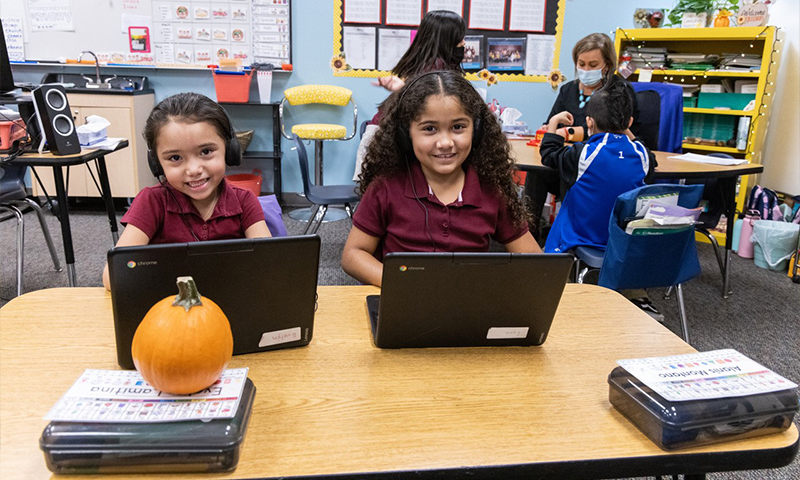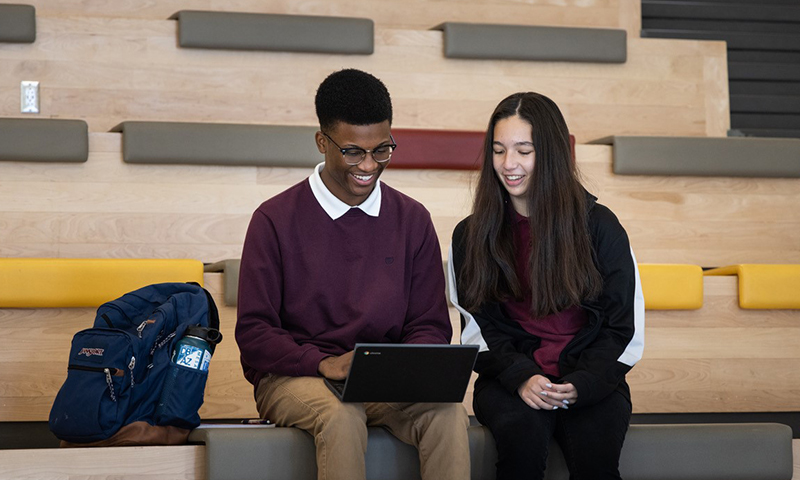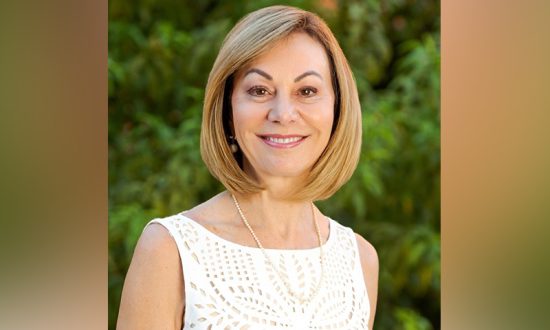Julie Young, Managing Director of ASU Prep and Vice President of ASU Educational Outreach, has been celebrated as an education disruptor for nearly three decades. She was the founding CEO and president of Florida Virtual School, the world’s first state-wide virtual school and one of the nation’s largest K-12 online education provider. When not leading international school programs, you’ll find her at the nearest beach with several golden retrievers.
Navigating a global pandemic revealed teachable moments in virtually every facet of life, but some of the greatest learning has come in the aftermath. Not only did the pandemic force new methods to emerge, but it also spurred new thinking. Along the way, the collective mindset shifted from what had to be done differently to what could be done differently.
Across nearly every sector, the pandemic forced us to rethink long-held truths and opened the gates wide for considering new approaches to conventional methods. Education is no exception. In fact, education may be the strongest example of them all. Digital learning, once an outlier shrouded in mystique, now permeates education today – from site-based classrooms to hybrid or flex options to fully online.
In the earliest days of the pandemic, missteps were rampant in schools from coast to coast — even around the world. The disruption to traditional learning was abrupt. It thrust educators into a fully online environment with no preparation.
Given the hyper-personalized way many of us live — with ads served up to match our browsing history and custom playlists that reflect our musical taste — the pandemic revealed education as a glaring anomaly.
Historically, while many schools offered online options for acceleration and remediation, those digital options were unevenly distributed and applied. Many schools lacked a comprehensive strategy for how digital learning tools could complement and support their entire instructional plan, and, as the pandemic revealed, staff were largely underprepared to teach in a digitally supported instructional environment.
Yet ultimately, a silver lining emerged from the pandemic. Digital learning has become recognized as a viable delivery method ripe with potential. This is particularly true when it comes to answering individual students’ unique circumstances or personal needs.
Take military kids, for example. These students bounce frequently from one school system to the next — in some cases entering a new district befuddled because the material is advanced well beyond their previous experience, and in others, wasting months in boredom while waiting for students in the new district to catch up. What’s more, with every move there’s a new set of peers to navigate. It’s disruptive, but there are alternatives.

For military families – and scores more — digital learning offers major academic and social advantages. ASU Prep Digital is a K-12 online program that fully integrates with Arizona State University. It operates within the ASU Prep network of K-12 schools, which have become a model for offering a spectrum of digitally-supported learning options, from classroom-based to fully online.
The programs have been embraced worldwide by students of virtually every imaginable background: Ambitious learners whose local school curriculum offers few challenges and a blurry path toward college. Youth with health conditions that leave them strong enough to learn but poorly suited for the rigors of a typical public school. Talented young musicians, artists and athletes whose rigorous practice and performance schedules demand greater flexibility than most districts allow. Young men and women in the war-ravaged Ukraine, who recognize education as the key to a brighter future.
New Models Gain Traction
Interest in alternative learning models has steadily grown since the pandemic emerged. Yet to be clear, the technology isn’t new. Online learning has been happening for decades. What is new is a heightened awareness that not all students learn in the same way, at the same pace, in the same environment — and that’s spurring an unprecedented level of innovation in the education sector.
The result is a steady depolarization. Students no longer have to choose strictly in-person or strictly online. The lines are blurring to accommodate students’ unique needs.

At the core of this forward thinking is a critical question: How do you want to learn? ASU Preparatory Academy offers a glimpse at how putting personalized student needs at the core can shape modalities and offerings. An accredited college preparatory school that serves students in grades K-12, ASU Prep is chartered by Arizona State University. Founded in 2008 with a single live campus, by 2017 ASU Prep had expanded its in-person offering and launched ASU Prep Digital, built on the same college preparatory framework but with classes exclusively online and available to both full- and part-time students anywhere in the world.
Today, ASU Prep’s continuum of options spans on-site immersion campuses in and around Phoenix on one end and fully flexible, any-time-anywhere programs on the other, all designed to keep students on an accelerated path toward college. In on-site classrooms, teachers embrace blended learning as they learn how to leverage digital tools to maximize personalization for each student.
Students and their families can also find a range of hybrid and microschool programs tailored to their unique learning needs and preferences. In addition to five-day in person campuses, two hybrid campuses in the Phoenix metro bring students to the classroom three days a week, leaving two days for more flexible learning.
ASU Prep Local is one of the new hybrid programs designed for online students who crave more personal interaction than a fully virtual model allows; digital coursework is enhanced with in-person collaboration, discussion and project-based learning in small group settings. Moving further along the continuum, the ASU Prep Experience, another hybrid model, provides a single day each week for college-bound online high school students to acclimate to the college environment by attending class on the Arizona State University campus. Both programs answer the growing interest in microschools among families attracted to smaller cohorts and targeted but flexible learning opportunities.
New enrollments at the fully virtual ASU Prep Digital remain strong, although most area schools have long since resumed regular in-person schedules. However, perhaps most telling of the need for more tailored learning options is the strength of the new hybrid modalities, each of which has surpassed enrollment projections at launch and continues to expand to meet growing demand.

Looking Ahead
After the pandemic, there was a rush to “return to normal,” which for many meant a return to traditional classrooms. The challenge, though, is that students need more options — not fewer. Online or hybrid models aren’t for every student, but they may be just the ticket for the student who is not thriving in the classroom or the student whose personal circumstances dictate a need for flexibility.
The future of learning is personalized – it meets students where they are, it assesses what they know, adapts content in real time to ensure comprehension, offers up new modalities if they need to learn differently and stays with them throughout their journey.




